World War One
How World War One changed the lives of local people
World War I had a significant impact on the lives of local people. Almost one million British military personnel were killed, and nearly two million were permanently disabled. From Huddersfield alone, around 3,500 men were killed. Huddersfield was quickly swept up in the wave of enthusiasm for the war. Parades took place in the town centre, and recruiting trams toured the area to encourage people to sign up. The Territorial units, which had been established before the war, doubled in size. Those who were unable to list due to age or health reasons organised themselves into a Volunteer Corps for home defence.
Not everyone supported the war. Conscientious objectors refused to join the services and were often imprisoned as a consequence. Arthur Gardiner was a leading Conscientious Objector and member of the Huddersfield British Socialist Party. It has been suggested that Huddersfield had been a 'special place' during the war because of the number of its Conscientious Objectors in the area, and the extent of its anti-war movement.
Lengthy casualty lists affected every street and village. Jack Gibson from Primrose Hill was only 15 years old when he enlisted. He suffered gas poisoning and spent time in the hospital at Le Havre. Entire families were affected. For example, four brothers from the Gallagher family enlisted. Three of these died in fighting, and only one returned home. Albert Edward Raynor lived on Thornton Lodge Road in Thornton Lodge, and was a primary teacher at Mount Pleasant Wesleyan Sunday School. In 1917 he was just 21 years old, and was killed fighting in Cambrai. After the war, it was not unusual to find entire streets where the male inhabitants had not returned. Legh Tolson, the owner of Ravensknowle Hall, experienced the impact of the war himself when his two nephews, Robert and James, died in combat. He gave his house to the people of Huddersfield in memory of his nephews, and it was then renamed Tolson Museum.
Everyone's lives were affected on the Home Front. The Defence of the Realm Act (DORA) was passed by Parliament in 1914, allowing the government to pass laws to protect citizens and help the war effort. Due to nearby attacks on Scarborough by Zeppelins in 1914, air raid precautions were issues for Huddersfield. Some foods became scarce due to German blockades of the seas which prevented ships from importing food, so rationing was introduced in February 1918. Women replaced men in many of Huddersfield's industries, and they also operated public transport and postal services. Factories in Huddersfield started making supplied for the war effort. Textile mills made khaki cloth for uniforms, and The Times described the Colne Valley as the 'Valley of Khaki'. This helped transform Kirklees' economy, which was previously seeing declining trade and mill closure. Chemical factories, such as Hollidays, were soon making explosives. In 1918 Huddersfield's contribution to the war effort was recognised by a visit from King George V and Queen Mary who visited some of the textile mills.
New hospitals were needed for the huge numbers of casualties returning from the Home Front. In Huddersfield, a main hospital was established at Royds Hall in 1915. By 1917, there were nineteen auxillary hospitals in a variety of public buildings including churches, schools and houses. A hospital in Holmfirth was opened in November 1914. Matron Roberts helped in its establishment and worked there until 1919. She received a Royal Red Cross medal for her work. Some even travelled to the war zones; Nurse Evelyn Faulder joined the First Aid Nursing Yeomanry (FANY) which provided ambulance support to the Red Cross. She served in the war zone between 1916 and 1918 and earned a medal for 'gallantry and conspicuous devotion to duty.'
The war ended in November 1918 and had touched the lives of every person and family in Britain. There was significant national mourning and attempts began to address how to remember the individuals who contributed. Changes in warfare also transformed medicial knowledge and led to improvements such as plastic surgery, blood transfusions and safer x-rays. Structures in society began to change as women took on essential roles during the war, and many of the country's middle and upper class men had fought side-by-side with ordinary citizens.
What to expect in the box
The items in bold are original items, please take extra care with these. You may want to wear gloves when handling some of these items.
These small, metal pin badges were worn by civilians during the First World War in order to indicate that the person wearing it was engaged in important war-work.
Before conscription was introduced in 1916, the army relied on voluntary recruitment. It was assumed by many that a man not in uniform was avoiding joining up and it was therefore common for them to be accused of shirking their duty to their country.
The wearers may have been working in munitions factories or in the dockyards carrying out work that was vital to the war effort.
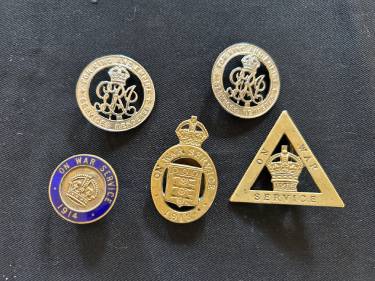
Medals were awarded to all those who met a particular set of criteria or for acts of bravery.
- British War Medal: For soldiers who served overseas or were involved in active fighting between 5th August 1914 - 11th November 1918.
- The Victoria Cross: to recognise acts of extreme bravery carried out under direct enemy fire.
- Victory Medal: for those who served in a area of active fighting during WW1.
- 1914-15 Star: For soldiers who served from 5th August 1914 to 31st December 1915.
- Military Cross: for those who demonstrate exemplary bravery during active fighting.
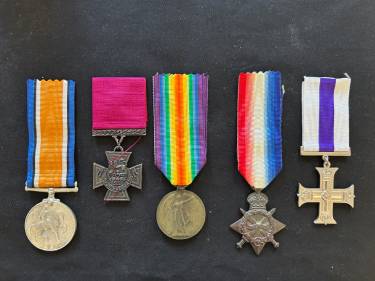
The MK 3 Grenade, also known as the offensive blast grenade, was a type of hand grenade used during World War I.
The first version was created in March 1918 and was designed for trench assaults to knock out bunkers and clear trenches without producing fragmentation that could injure the user or friendly forces nearby.
These grenades were effective in close combat and for concussion effects in enclosed areas due to the shock waves produced by the explosion.
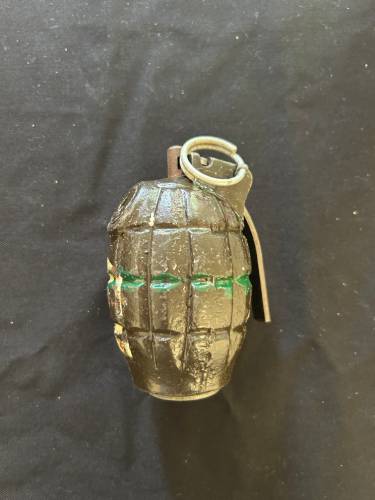
This 18-pound artillery shell was recovered from the Somme Battlefields Area. Thousands of these shells were fired in an attempt to destroy German defences and cut their barbed wire.
The shrapnel shell of the artillery gun contained 375 shrapnel balls and was activated by a fuse located in the nose of the shrapnel shell. At the designated height and distance above the target, this charge exploded, expelling the shrapnel balls forward.
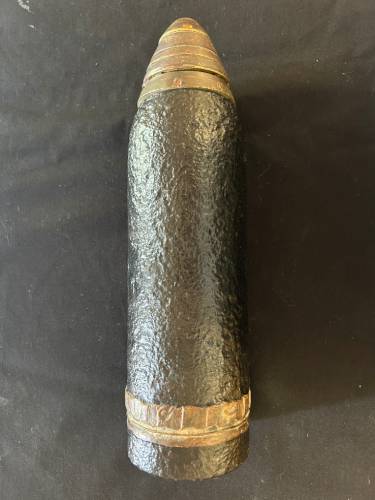
Trench whistles were first used by British forces in World War I, this was due to the noise of artillery shells and bullets which often caused shouted commands to go unheard. Soldiers relied on these whistles to warn about gas attacks and other dangers.
The sound of the trench whistle also often marked the moment troops were sent over the top into battle, or when they needed to retreat.
They were provided to higher ranking officers and had a leather lanyard or strap which was used to keep the whistle from being lost during battle.
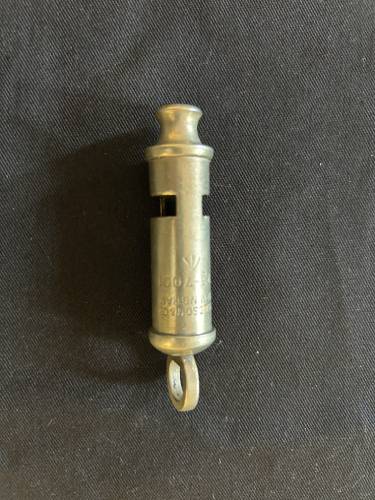
Rationing was introduced in 1918 due to food shortages caused by German blockades, which prevented food being imported from overseas.
Children's ration books, similar to those for adults, would have contained coupons for these rationed items. The coupons had to be handed in at designated shops each time food was purchased.
This system helped to ensure that everyone, regardless of social status, had access to food.
This book belonged to a child in Batley.
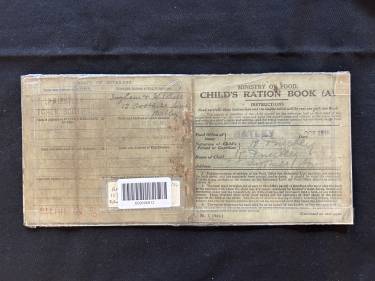
Trench orders booklets were provided to soldiers during World War One. They gave detailed instructions and rules that governed life in the trenches, covering a wide range of topics, from general duties and weapon handling, to specific protocols for shooting at enemy aircraft.
They were essential for maintaining discipline, safety, and the overall effectiveness of the troops in the challenging conditions of trench warfare.
Every British serviceman was also issued with a Bible - often offering solace to soldiers.
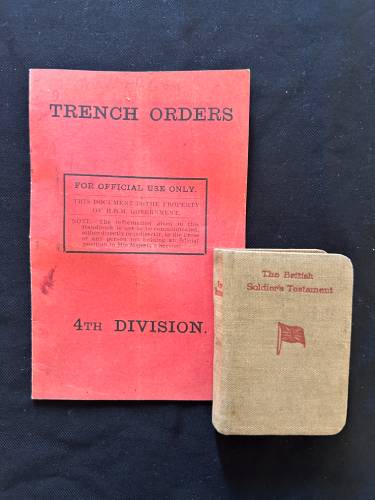
The War Illustrated was a British war magazine published in London, and first released on 22 August 1914.
The magazine offers a pictorial record of World War One. It included numerous maps, photographs and illustrations, and the work of war artists. It also provided weekly reporting on the conflict, informing people of the events and consequences of global conflict.
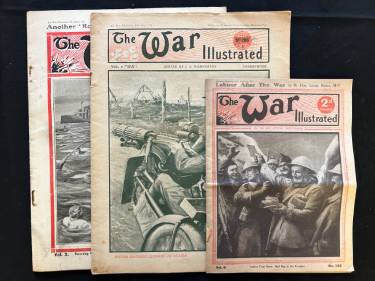
Torches were designed carefully as lighting was a matter of practicality and safety in the trenches - the types of lighting used was very dim to prevent being seen by the enemy.
This common type of trench torch was known as the 'Orilux' which was carried by officers and designed to be discreet, often used in dugouts or support trenches.
The use of light in World War 1 trenches was minimal and always with caution.
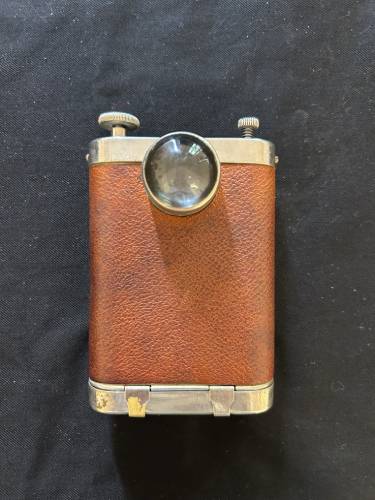
These were commonly known as Death Pennies, or Dead Man's Pennies, as they were given to the family of a soldier who had been killed serving with the British and Empire forces during World War One.
From the First World War alone, 1,355,000 plaques were issued, which used a total of 450 tons of bronze, and continued to be issued into the 1930's to commemorate people who died later as a consequence of the war.
They were often despised by the families who received them, who wanted a more significant memorial to their dead. This led to many public monuments being built in the 1920's.
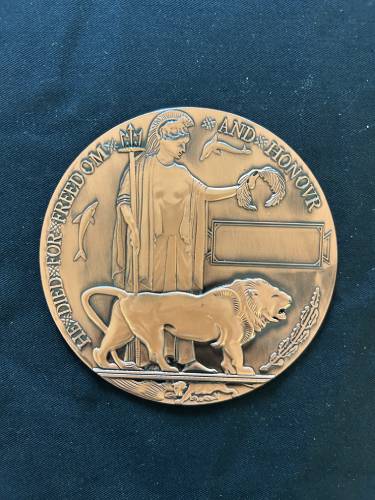
At the start of the First World War, the General Post Office worked in complete secrecy. It was instructed to prevent any letters from reaching troops and vice versa.
By December, an efficient mail system was up and running and soldiers could expect to receive mail from home within two days of it being sent. People only had to write the names and their fighting unit on the front, and it would be sorted by the Home Depot, based in London. From there, letters travelled in 'boat trains' to France and Belgium, and were then taken by horse, truck or cart to the trenches, along with food and arms.
Soldiers could use Field Service Cards, with simple printed messages they just crossed out as appropriate. If they wanted to send something hand written, it would be examined and censored (to remove sensitive information) first.
By 1917, British soldiers were sending home between 1 and 2 million letters and postcards every day - helping to ease the pain of separation. Twelve and a half million letters were delivered to the Western Front every week during WWI.
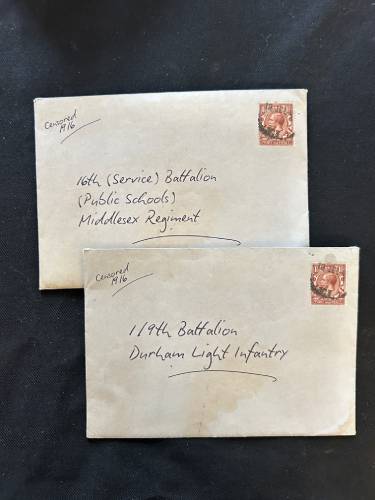
This was a brass tin containing a number of gifts intended to be distributed to all members of the armed forces of the British Empire at Christmas 1914, during World War I.
Whilst around 400,000 were delivered by Christmas, distribution was not completed until 1920, by which time approximately 2.5 million had been delivered.
The standard gift included the box itself, twenty cigarettes, an ounce of pipe tobacco, a pipe, a Christmas card and a photograph of Princess Mary.

This is the remnant of a horse shoe recovered from the Somme Battlefields area.
When war started in August 1914, the army conscripted thousands of civilian horses to serve alongside its soldiers. They spent around £67.5 million (£3 billion in today's money) purchasing, training and delivering horses to the front. By 1917, 368,000 horses were deployed on the Western Front.
Cavalry (horse) units were initially considered essential offensive elements of the war, but over time they became too vulnerable in the face of modern machine guns, artillery and tanks. By the end of the war they were used for carrying messengers and pulling artillery, ambulances and supplies.
Dogs were also a common sight on the Western Front, used for companionship, sending messages, detecting explosives and finding wounded soldiers. It is believed over 16 million animals were in service during World War One.
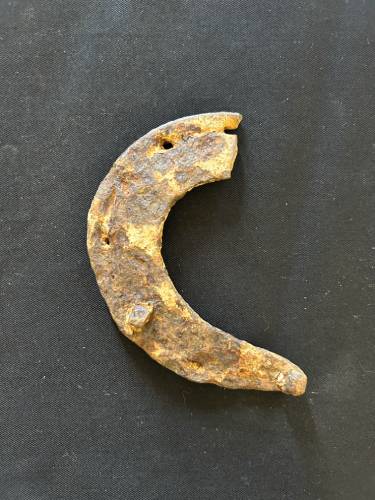
Bamford song cards were a series of postcards produced during World War I by Bamforth & Co Ltd, a company based in Holmfirth, Huddersfield.
These cards were highly collectible and featured illustrations and lyrics of popular songs of the day.
They were often sent between loved ones and soldiers during the war as a means of communication and expression of sentiment.
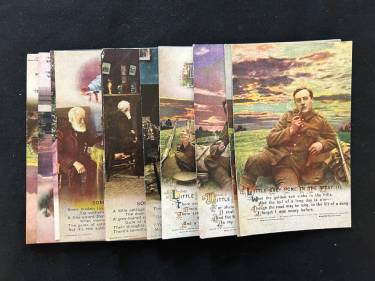
This spade was recovered from the fields in the Somme Battlefields area.
All British infantry men were equipped with a personal entrenching tool which comprised of a steel head of combined spade and pick and a separate wooden handle. Between the blade and the spike was a ring into which the handle could be inserted.
These were all carried in a soldiers webbing kit - used for digging defensive fighting positions, latrines and graves.
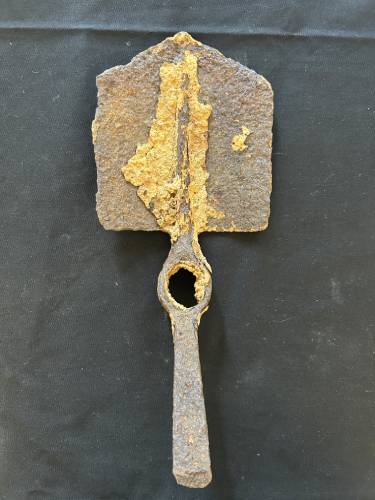
Trenches, troops and territory were all documented on postcards during the First World War. These images acted as propaganda showing those at home the strength of the British Armed Forces. Many of these scenes were an idealised representation of life on the frontlines.
Quick communication boosted morale and allowed friends and family back home to know their loved ones were safe.
Soldiers were encouraged to send mail home and were given free postage.
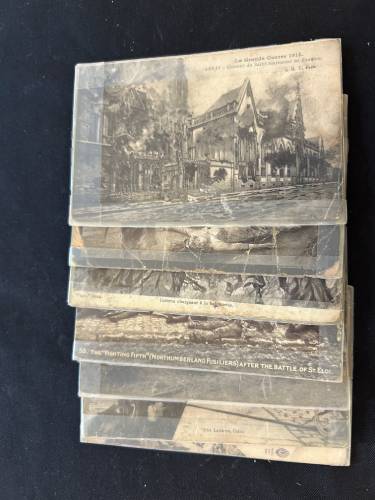
This was the quintessential hand grenade of the German Army in both World War 1 and 2.
While generally referred to as a 'stick grenade', the type was also given the nickname of 'Potato Masher' by the Allies due to its shape.
Grenades proved to be useful offensive and defensive weapons and could be used to dislodge an entrenched enemy.
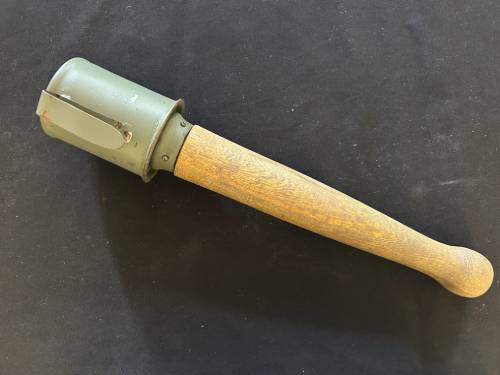
The Brodie helmet was the first steel helmet introduced to British soldiers during World War 1.
It was introduced on the Western Front in 1916, designed to protect the head, face, and neck from the projectiles of the enemy.
The Brodie helmet was designed and patented in London in 1915 by John Leopold Brodie. It was adopted by all British and Commonwealth Troops, and then by the United States when it entered the war in 1917.
Although it did initially have a neck strap, many soldiers did not wear this as it could be fatal due to the shock-waves near explosions, causing decapitation!
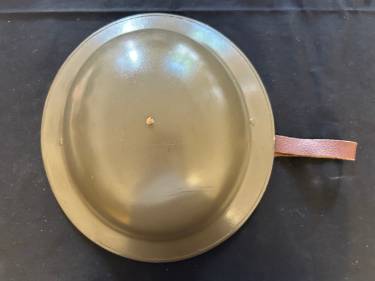
Explore the following themes using the objects
- Weapons
- Innovation
- Technology
- Health
- Memorials
- Communication
- Trench warfare




